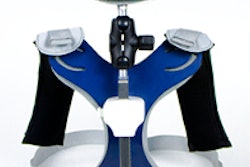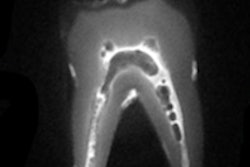
There is evidence that sleep obstructive sleep apnea (OSA) has negative consequences much beyond the annoyance of keeping one's partner awake. In previous studies, it has been linked to cardiovascular disease and systemic hypertension in the long term and fluctuations in blood pressure and heart rate in the near term.
But are OSA signs and symptoms associated with chronic temporomandibular disorder (TMD) as well? A small body of evidence has suggested that this is true, so researchers from the University of North Carolina at Chapel Hill School of Dentistry and three other universities tested the hypothesis in a population-based epidemiologic study published in the Journal of Dental Research (July 2013, Vol. 92:7(suppl), pp. S70-S77).
Their findings appear to support the association. "In the population-based cohort of adults free of TMD at baseline, OSA signs/symptoms were associated with increased incidence of first-onset TMD," wrote the researchers, noting that the likelihood increased as the number of OSA symptoms increased.
"Men and women with two or more signs/symptoms of OSA had a 73% greater incidence of first-onset TMD, in relative terms, than those with fewer signs/symptoms, independently of age, gender, race/ethnicity, obesity, smoking history, and autonomic parameters," the study authors explained.
In addition, chronic TMD was more than three times as common among adults with low relative to high likelihood of OSA, they noted.
5-year study
The researchers gathered data from an ongoing prospective cohort study, the Orofacial Pain Prospective Evaluation and Risk Assessment (OPPERA), to test their hypothesis. Funded by the National Institute of Dental and Craniofacial Research, part of the National Institutes of Health, the OPPERA study is being conducted with the participation of some 6,000 participants at four sites: the University of Maryland Dental School and the dental schools at the universities of Buffalo, North Carolina, and Florida. The $17 million study, now in its fifth year, is deepening scientists' understanding of risk factors and genetic markers for various conditions, including TMD, headaches, irritable bowel syndrome, low back pain, and chronic widespread pain.
The researchers considered data for 2,604 adult participants in the OPPERA study between the ages of 18 and 44 for their work. Each participant had been examined in accordance with research diagnostic criteria for TMD that had been adapted for the OPPERA study. They were also evaluated for OSA with three questions pertaining to loud snoring, difficulty staying awake, and witnessed sleep apnea. The presence of hypertension was ascertained with each participant's medical history.
"Together, these four hallmarks of OSA comprise the four-item OSA screening questionnaire called STOP," the researchers wrote. Consistent with STOP, they defined two or more affirmative responses to these signs/symptoms as indicative of high likelihood of OSA. A self-reported history of sleep also was grouped with the high likelihood of OSA participants.
In addition, the researchers created three successive multivariable Cox models to separate the OSA-TMD relationship from three contributing factors. They adjusted model 1 for the study site and demographic characteristics, added autonomic parameters for model 2, and added body mass index and smoking history to model 3.
Within the prospective cohort, 248 people developed first-onset TMD in 7,068 person-years of follow-up, yielding an average annual incidence rate of 3.5%, the researchers noted.
"Among the 6.1% of people with high likelihood for OSA, the rate of first-onset TMD was twofold greater relative to that of people with low likelihood for OSA," they wrote.
In addition, 6% of the participants (n = 102) had a high likelihood for OSA in the case-control study of chronic TMD.
"The prospective cohort findings imply that OSA contributes to the onset of painful TMD symptoms," the researchers concluded.



















